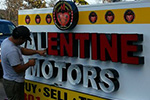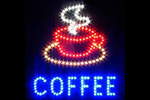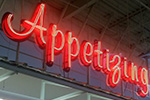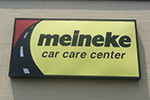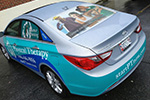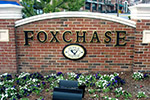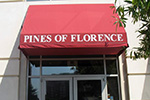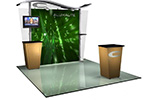TRADE SHOW DISPLAYS

A trade show display consists of the physical screens, banners and other paraphernalia used to fill a temporary stall or booth at a trade fair or convention. The displays vary greatly in size, cost and complexity, but all are designed to visually represent a specific interest. Companies typically rent exhibit space from show organizers and then, design trade show displays to attract the attention of visitors and attendees at the trade show. Trade show displays usually use bold images and catch phrases, in an attempt to lure attendees to their exhibit space, so that they can give a sales pitch or hand out brochures.
The trade show industry serves a staggeringly wide and varied audience. Virtually every industry has its own menagerie of shows that cater to virtually "every" sub-segment. On a micro level, there are numerous reasons for exhibitors to deploy a display at a given trade show. On a macro level it can be said that there are only five reasons:
·To sell.
·To launch.
·To correct a misconception.
·To create an impression.
·To get create internal "buy-in" for the initiatives above.
These five reasons are sometimes grouped into the generalization Trade show Impact. Another view groups all trade show goals into 4 reasons to exhibit:
1. Increasing sales and reinforcing market share
2. Increasing share of customers and getting current customers to buy more
3. Introducing new products
4. Positioning or repositioning your organization, its brand and products
Types of Trade show displays
· Tabletop displays. Usually a small metal frame work which can easily collapse (much like a backpacking tent frame) into a small carrying case, with graphic panels that attach to the frame work via mechanical fasteners, magnets, or Velcro. These displays are typically very easy to set up, and require little to no on site support labor. As the name implies, they are designed to be set on top of a table, one usually supplied by the show contractor. As with pipe and drape, this table is often provided as part of the price of renting the exhibit space.
· Table covers. (Also known as Throw covers.) If the exhibitor is using a table within their exhibit space (whether provided by the show contractor or rented), custom printed table covers allow the exhibitor to the opportunity to use the table as a branding opportunity, as opposed to just a stock, non-branded table drape. Show provided tables normally come with a neutral table drape, and a custom cover allows the exhibitor to stand out from those who use the stock table cover.
· Pipe and Drape. Often provided by the show contractor, these typically use a metal frame of upright posts supported by base plates, with cross beams on which the fabric drape is either threaded (via a sewn pocket) or tied. These types of displays are often provided by the show contractor as part of the price of the exhibit space. The fabric drape is usually a neutral color or a color which ties in with the theme of the show. Exhibitors can use these as a backdrop for their own display pieces, but they are not meant to support any direct weight, and provide little in the way of display client graphics or branding. Most exhibitors use a purchased or rented display structure in front of the supplied pipe and drape.
· Pop-up Displays. (These are sometimes called a Pull-Up display or Portable display) A display which uses a flexible graphic panel (fabric or other man-made material) attached to a spring loaded roller on which the graphic winds for storage. When ready to display, the graphic is pulled up, and then secured to a support post at the back of the roller, which holds the graphic up and taut in place. These can be used individually, or in series, as warrants. Like tabletop displays, they are normally very lightweight, and can be easily transported and set up without needing much on site labor support. The components are often made from very lightweight materials, and transported in small traveling cases (often injection molded plastic). Most often curved in shape, they are also now popular as straight walls with attached fabric mural graphics.
· Modular Exhibits. These exhibits fall between a pop-up display, and a panel & frame system. Whereas a pop-up is typically a small background property, a modular display is an entire space. They use a standardized basic structure, whether this be a metal frame work, or thin, lightweight panel construction, which is then configured within the confines of the structure limitations to what the exhibitor requires. A study by Trade Show Week Magazine showed that modular exhibits weigh, on average, about 60% less than traditional custom exhibits. Analogous to a Lego or Tinker-toy, the components are typically easily reconfigured into new layouts as the exhibitor may require from show to show. The components are often made from very lightweight materials, and transported in small traveling cases (often injection molded plastic).
· Panel & Frame Systems. These are the ubiquitous exhibit, retail, display and presentation systems. In many ways, when people think of modular exhibits today, they are thinking of Panel & Frame systems like aluminum extrusions, which is sold (in pieces and parts) to distributors, who in turn market a range of solutions (including exhibit solutions) for rent or purchase at a variety of quality levels and price points. There are hundreds (or maybe even thousands) of "parts" available. In North America anyway, tradeshow floors are typically laid out with Panel & Frame products. These products are a ubiquitous category all to themselves. Unlike a tabletop display or modular exhibit, Panel & Frame Systems will require the services of an on site labor source (show general contractor, or a labor contractor approved through show management).
. Custom Exhibits.These rental or purchase exhibits are fabricated from a variety of materials, based upon the design and needs of the exhibitor. These exhibits often incorporate hard wall panels to create rooms and separated spaces, stages, large metal structures, display and work stations, and other display components. Custom exhibits cannot normally be set up by the exhibitor without utilizing the services of an on site labor source (show general contractor, or a labor contractor approved through show management).
Large companies often buy a custom exhibit to be used at different shows in different countries all over the world - a concept similar to the set of sound and stage equipment that accompanies world famous music groups on their tours around the world. Rules for construction of custom exhibits vary from country to country and even show hall to show hall.
For example, in Russia, construction of even temporary structures at the exhibition venues is treated in accordance with the Russian construction laws that mainly apply to capital development. Even if the custom exhibit has been used at other shows in other countries, its design and the credentials of the builder will be scrutinized by the organizers of the show and the technical department of the venue.
Custom exhibits are transported to the exhibit hall in exhibit crates, skids, dollies, or sometimes via pad wrapping, to protect the exhibit properties during transport, and during set up and tear down.
Installation & Dismantle
For years, the trade show display business was dominated by the notion of selling and owning one's display properties. There are a number of reasons for this including accounting realities and the cultural history of the industry itself. But, in recent years, this has all begun change. At one time, the notion of Rental Exhibits would have been a category in the list above; that is to say that at one time a Rental Exhibit would have been viewed as a type of exhibit, usually a property owned by an outside vendor (either the show general contractor, or an outside rental exhibit company), which are stock properties that are rented to the exhibitor in a standard configuration, or a modified version thereof. This is no longer the case.
Current thinking in the exhibit industry often treats rental and purchase as alternative financial strategies aimed at accomplishing different ends. These days virtually any trade show display of any type or quality can be rented or purchased.
In some markets (such as North America and Europe) rental provides lower initial (and even lower overall costs due to costs of trade show exhibit ownership while delivering greater flexibility whereas purchase provides certain undeniable accounting benefits. Consumers of trade show displays in these markets must weigh their options to determine what works best for their situation. In other markets (such as most of Asia) raw materials and labor are priced such that rental is rarely competitive. This is due to the disposable Build and Burn approach which is so prevalent.
While it is true that any trade show display of any type or quality can be rented or purchased, there are still some types of trade show displays which are viewed as almost exclusively rental properties:
· Used Exhibits. - These are existing exhibit properties, usually older and sometimes worn (though not necessarily), originally built for another purpose, available for rental or purchase. Many exhibit houses have a few of these lying about. Some exhibit houses have built their businesses on them. Just as there is nothing inherently wrong with a used car, there is nothing inherently wrong with a used exhibit. It depends upon the exhibit itself. Used exhibits may require the services of an on site labor source (show general contractor, or a labor contractor approved through show management) to set up, and often the rental exhibit provider can provided those services as part of the rental package to the exhibitor.
· Inventory Rentals. - These exhibits are properties owned by an outside vendor (either the show general contractor, or an outside rental exhibit company), which are stock properties that are rented to the exhibitor in a standard configuration, or a modified version thereof. Rental exhibits use these stock properties to provide a basic structure for the exhibitor, which can then be augmented by custom graphics, easily applied and removed finishes, and other cosmetic augmentation. Inventory rentals normally require the services of an on site labor source (show general contractor, or a labor contractor approved through show management) to set up, and often the rental exhibit provider can provided those services as part of the rental package to the exhibitor.
Display standard sizes and configurations
Trade show displays vary in size. While tabletop displays can be smaller than an average table or desk, some custom exhibits may be larger than a typical city block.
The typical booth size in North America is 10ft x 10ft. Exhibitors can typically rent space in multiples of the standard 10ft by 10ft space (renting two 10ft x 10ft spaces that are beside each other would form a 10ft x 20ft space, and renting four 10ft x 10ft spaces in a square would form a 20ft x 20ft exhibit space).
In Europe, and Asia, exhibit spaces are typically done in 1m increments, with the smallest typically being 3m x 3m.
In either case, a "show floor" is "made" by arranging the various exhibitors based upon their spatial requests. Regardless of geography, the rental realities dictate that all displays on a trade show floor will fall into one of several configurations:
· Linear Booth. “(Also called “In-Line Booth“) An exhibit space with exhibit booths on either side and/or back.”.
· Peninsula Exhibit. “A peninsula is an exhibit or area with aisles on three sides. A Peninsula Booth is 20’x20’ or larger.”
· Split-Island Exhibit. “A Split Island Booth is a Peninsula Booth which shares a common backwall with another Peninsula Booth.”
· Island Exhibit. “An Island Exhibit is any booth exposed to aisles on all four sides. An Island Booth is virtually always 20’ x 20’ or larger.”
Geographic / Cultural Differences in Approach
Differences in how trade show displays are approached vary on the locale: in South America, Europe and Asia it is much more common to have what is known in the industry as “build and burn” exhibits, which are exhibits which are fabricated and set up just for the life of the one show. In North America it is more common to have exhibits which are purchased, and then used many times for different shows before they are either re-purposed, or disposed of. In Europe, trade shows have much longer hours, and are more about having longer meetings and actually closing deals than in North America -- therefore displays are built more to facilitate longer meetings, including more comfortable seating and hospitality such as food and beverages.
Trade show display companies
There is an entire industry built around the design and sale of trade show displays. Many companies that sell trade show displays have elaborate showrooms in major cities, and other companies sell displays over the internet without a showroom. Typically a trade show display company will specialize in one type of trade show display. Internet companies tend to specialize in modular, portable, and hybrid trade show displays, while companies with large showrooms typically specialize in custom exhibit booths.
To cut the costs of the exhibits display manufacturers often use what is known as "exhibition systems" such as, for example, MODUL to build walls of the booths and add "bespoke" elements manufactured from plastic, wood etc. to create a unique look of display. After the trade fair the system is collected and stored by the display manufacturer, while the extra elements (including banners, posters, custom info desks etc.) are used.

Event & Sponsor Signs
Whether you are hosting a big or small event, we can create the elements you need to generate a buzz with Event & Sponsor Signs.
Having a big outdoor concert or rally that you want visually represented with popping graphics and colors? Looking to provide just the right visual impact for your next outdoor Festival, Party or Fashion show? Looking to properly advertise your next Charity, Sport Tournaments or fundraising event? Rely on D Impression Signs expertise with event signs to help you pull off your next outdoor event with custom event and sponsor signs.
At D Impression Signs, we work with outdoor event planners and business owners of all sizes, to provide custom graphics for your outdoor events. We can provide durable and portable custom signage for outdoor events of all types, including All kind of Sport Sporting Events & Tournaments, Fundraisers, Corporate Events, Media Events, Movie Premiers, Film Festivals, Red Carpet Events and any other kind of outdoor event you may have.
Special Event Banners - We offer digitally printed, Custom Banners, up to grand format sizes, that can be printed on many different durable, weather-resistant materials, including mesh and vinyl. We also have a full line of banner stands for display.
